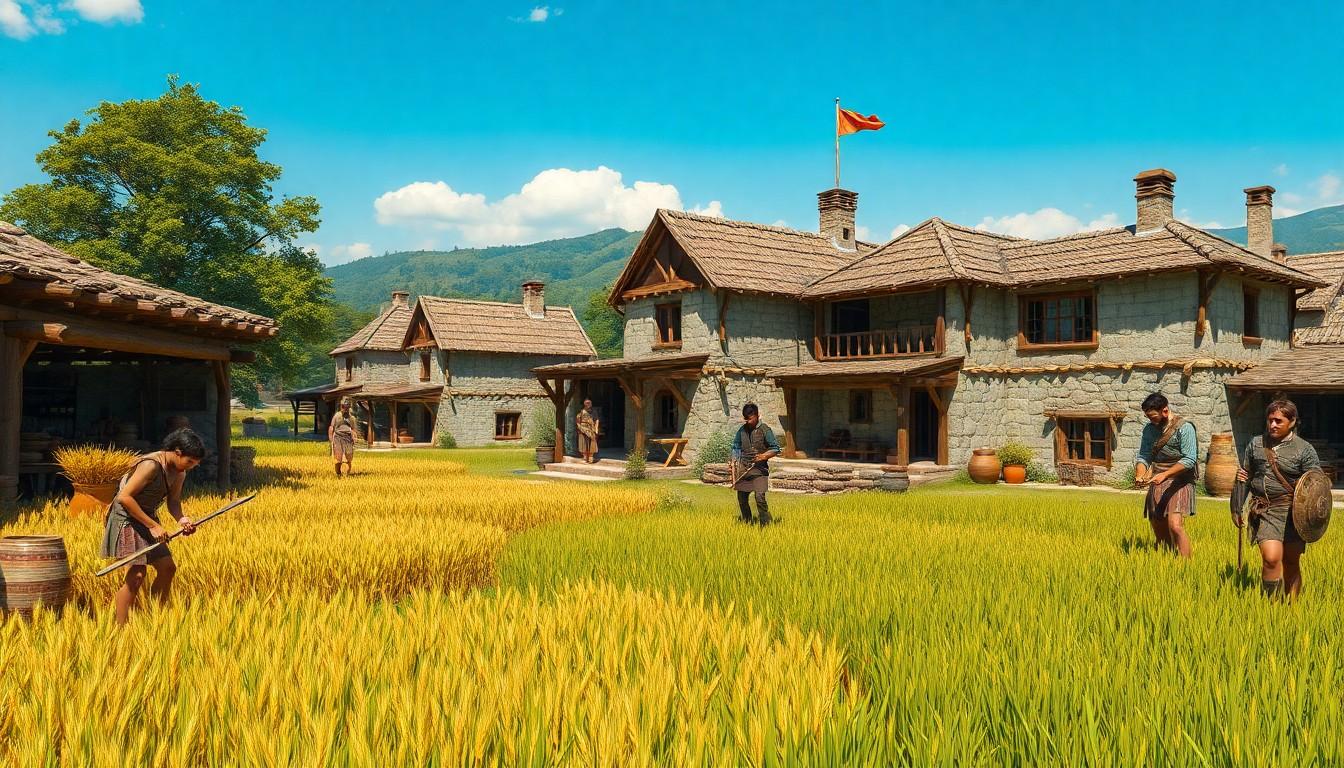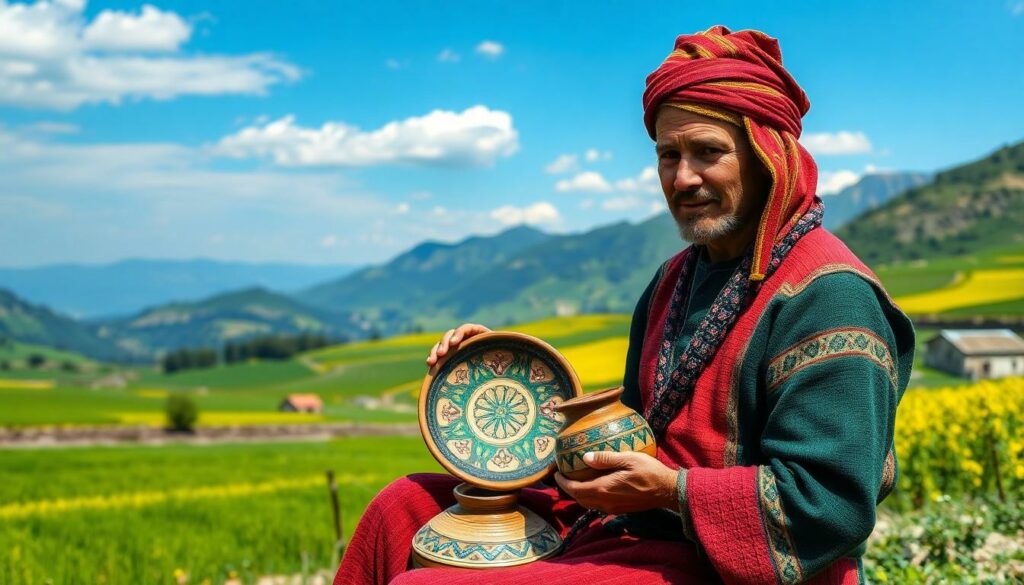Step into the intriguing world of the Paonians, an ancient tribe whose stories are as captivating as they are enigmatic. Tucked away in the Balkans, these spirited folks were the original trendsetters, from their distinctive traditions to their masterful craftsmanship. Ever wondered where some of your favorite customs originated? The Paonians might just be to blame!
Παωνίους
The Παωνίοι were an ancient tribe inhabiting the Balkans, renowned for their rich cultural heritage. Their legacy includes unique traditions and exceptional craftsmanship that influenced surrounding regions.
Definition and Origins
The Παωνίοι originated in the central Balkans during the early first millennium BCE. Classified as a Thracian tribe, they settled primarily in present-day North Macedonia and parts of Greece. Archaeological evidence highlights their advanced metallurgical skills and intricate pottery designs. Linguistic studies suggest that their language shared similarities with other Thracian dialects, indicating cultural exchanges. The tribe’s strategic location facilitated trade routes, enhancing their economic and cultural development. Historical records from neighboring civilizations, such as the Greeks and Romans, reference the Παωνίοι for their warrior prowess and artistic contributions. Genetic studies reveal a diverse ancestry, reflecting migrations and interactions with various ethnic groups. Their societal structure comprised tribal leaders and skilled artisans, emphasizing the importance of craftsmanship. Religious practices centered around nature worship, evident in their burial sites and ceremonial artifacts. The Παωνίοι’s origins set the foundation for their enduring influence in Balkan history.
Historical Background
Throughout history, the Παωνίοι played a pivotal role in the Balkans’ socio-political landscape. During the Hellenistic period, they engaged in alliances and conflicts with Greek city-states, shaping regional dynamics. Their craftsmanship gained prominence, particularly in metalwork and textile production, influencing neighboring cultures. The Roman conquest in the 2nd century BCE marked a significant transition, integrating the Παωνίοι into the Roman Empire. Despite assimilation pressures, they maintained distinct cultural practices, contributing to the empire’s diversity. The Byzantine era saw a gradual decline in their autonomy, with many assimilating into broader Byzantine society. Historical texts document their participation in various military campaigns, showcasing their strategic importance. Trade networks established by the Παωνίοι facilitated cultural and economic exchanges across the Balkans. Their legacy persisted through folklore and archaeological sites, providing insights into their societal contributions. The historical trajectory of the Παωνίοι underscores their resilience and lasting impact on Balkan heritage.
Behavior and Impact

The Paonians exhibited distinct behaviors that shaped their society and influenced neighboring cultures. Their actions and interactions left a lasting impact on the Balkan region.
Common Activities
Paonian daily life centered around agriculture and craftsmanship. They cultivated wheat, barley, and olives, ensuring food sustainability. Metalworking stood out as a primary occupation, producing weapons, tools, and decorative items. Pottery creation showcased their artistic skills, featuring intricate designs and functional forms. Trade was essential, with Paonians exchanging goods along established routes. Religious rituals played a significant role, involving ceremonies and festivals that reinforced community bonds. Additionally, warfare training prepared warriors for local conflicts and alliances, maintaining their reputation as formidable fighters.
Effect on Society
Paonian influence extended beyond their immediate community, affecting regional socio-political dynamics. Their advanced metallurgy elevated local industries, setting standards for quality and craftsmanship. Cultural exchanges introduced Paonian art and techniques to neighboring tribes, promoting shared aesthetics and practices. Strategic alliances forged with Greek city-states and other Balkan tribes enhanced economic and military strength. The Roman conquest integrated Paonian skills into the expanding empire, preserving their craftsmanship standards. Social structures emphasized clan leadership and cooperative community efforts, influencing governance models in surrounding areas. Ultimately, the Paonians contributed to the cultural and technological advancements of the Balkans, leaving a resilient legacy.
Motivations and Influences
The Paonians’ development was shaped by both internal motivations and external influences. These factors drove their societal advancements and cultural resilience.
Social Drivers
Community cohesion played a crucial role in Paonian society. Structured alliances with Greek city-states enhanced their military strength and economic prosperity. Trade routes facilitated by their strategic Balkan location boosted interactions with neighboring tribes, fostering cultural exchanges. Agricultural practices ensured food security, supporting population growth and stability. Craftsmanship in metalwork and textiles not only met local needs but also created trade opportunities, reinforcing economic dependencies. Social hierarchies established clear roles, promoting efficient organization and resource distribution. Religious rituals strengthened communal bonds, providing shared identities and values. Educational practices, centered around skilled trades, preserved knowledge and traditions across generations. These social drivers collectively enabled the Paonians to maintain a robust and adaptable society, capable of thriving amidst regional dynamics and external pressures.
Psychological Factors
Cultural identity significantly influenced Paonian resilience. A strong sense of heritage fostered pride and unity among the tribe members. Warrior traditions emphasized honor and bravery, reinforcing communal solidarity during conflicts. Artistic expression through pottery and metalwork served as outlets for cultural storytelling and preservation. Collective memory of alliances and achievements instilled confidence in facing external threats. Adaptability emerged from the need to integrate diverse influences while maintaining distinct cultural practices. Leadership structures promoted loyalty and motivated individuals to contribute to societal goals. Religious beliefs provided a framework for understanding the world, guiding moral and ethical decisions. These psychological factors underpinned the Paonians’ ability to navigate challenges, sustain their traditions, and leave a lasting legacy in Balkan history.
Addressing Παωνίους
The Paonians implemented structured systems to maintain societal order and foster community resilience. Their approaches reflected a balance between authority and communal cooperation.
Law Enforcement Approaches
The Paonians maintained order through a combination of military oversight and local governance. War leaders, recognized for their strategic prowess, enforced laws during conflicts and peacetime. Archaeological findings reveal fortified settlements indicating organized defense mechanisms. Legal norms emphasized collective responsibility, where community members upheld societal standards. Punishments for transgressions included fines, forced labor, or exile, as documented in historical records from Greek sources. Additionally, councils composed of elders mediated disputes, ensuring decisions aligned with Paonian traditions. This dual approach of military and communal enforcement sustained stability and deterred internal conflicts. Trade routes safeguarded by these measures facilitated economic prosperity, demonstrating the effectiveness of their law enforcement strategies.
Community Solutions
Paonian communities addressed challenges through collective efforts and resource management. Agricultural practices were optimized by communal farming techniques, ensuring food security and efficient land use. Craftsmanship guilds collaborated to produce high-quality metalwork and pottery, enhancing trade and cultural exchange. Social hierarchies organized labor, allowing specialized skills to flourish. Religious rituals united members, reinforcing social bonds and shared identities. In times of hardship, such as crop failures or conflicts, communities mobilized resources to support affected members, showcasing resilience. Educational initiatives, passed down through generations, preserved craftsmanship and strategic knowledge. These collaborative solutions enabled the Paonians to thrive, maintain cohesion, and adapt to changing regional dynamics effectively.
The History of Paonians
The legacy of the Paonians remains a vital part of Balkan heritage. Their artistry and craftsmanship continue to inspire modern traditions, reflecting a rich cultural tapestry that’s withstood the test of time. The resilience and innovation of the Paonians offer valuable lessons in community building and cultural preservation. Exploring their history not only honors their contributions but also deepens our understanding of the region’s ancient dynamics. The Paonians’ enduring influence underscores their significance in shaping the cultural and historical landscape of the Balkans.



